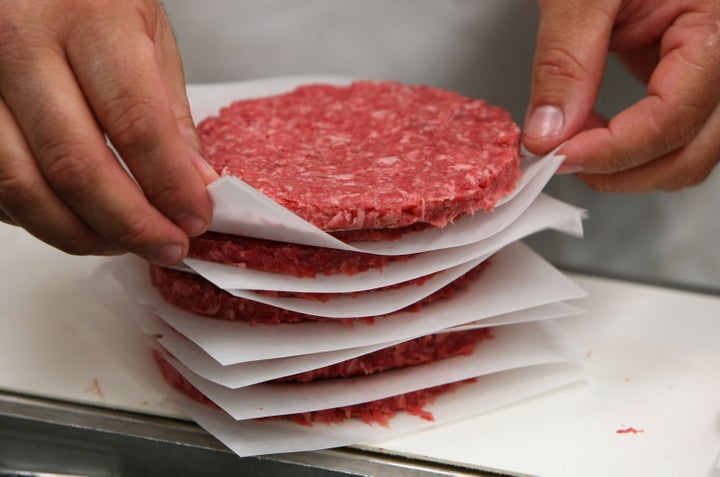
If you want to know how much damage a bad name can do, consider "pink slime."
Over the past weeks and months, the substance, which consists of beef trimmings that have been treated with ammonia, has been vilified throughout the media. The mudslinging began on "Jamie Oliver's Food Revolution" almost a year ago, and hasn't much abated since. Critics have depicted "pink slime" -- which is manufactured by the equally unfortunately-named company Beef Products Inc. -- as an abomination, the product of a grotesque, dangerous process. Even fast food companies have abandoned the products, making its continued presence in school lunches and on grocery story shelves both offensive and surprising.
But amid all the hullaballoo, one thing people seem to have lost track of is what, exactly, is the problem with pink slime -- other than its disgusting name. Indeed, Food Safety News reports that a group of food safety advocates who met this week at 2012 Annual Beef Industry Safety Summit was flabbergasted at the level of public outrage over "pink slime."
The defenders prefer the term "boneless lean beef trimming" or BLBT, to "pink slime." They argue that there's no evidence that there's anything remotely dangerous about BLBT, and that the negative perception is all a product of bad branding and misinformation. The American Meat Institute -- admittedly a far-from-neutral authority -- gave Food Safety News a statement in support of BLBT:
The fact is, BLBT is beef. The beef trimmings that are used to make BLBT are absolutely edible. In fact, no process can somehow make inedible meat edible; it's impossible. In reality, the BLBT production process simply removes fat and makes the remaining beef more lean and suited to a variety of beef products that satisfy consumers' desire for leaner foods.
In fact, BLBT is a sustainable product because it recovers lean meat that would otherwise be wasted. The beef industry is proud to efficiently produce as much lean meat as possible from the cattle we raise. It's the right thing to do and it ensures that our products remain as affordable as we can make them while helping to feed America and the world.
Some of the claims of safety are belied by the 2009 New York Times piece that first discussed the issue of "pink slime" in depth. Still, if you're one of the many Americans who's been quick to pounce on the "disgusting" nature of "pink slime," it's worth pausing to make sure you're acting out of a rational assessment of its pros and cons and not just trial by moniker.